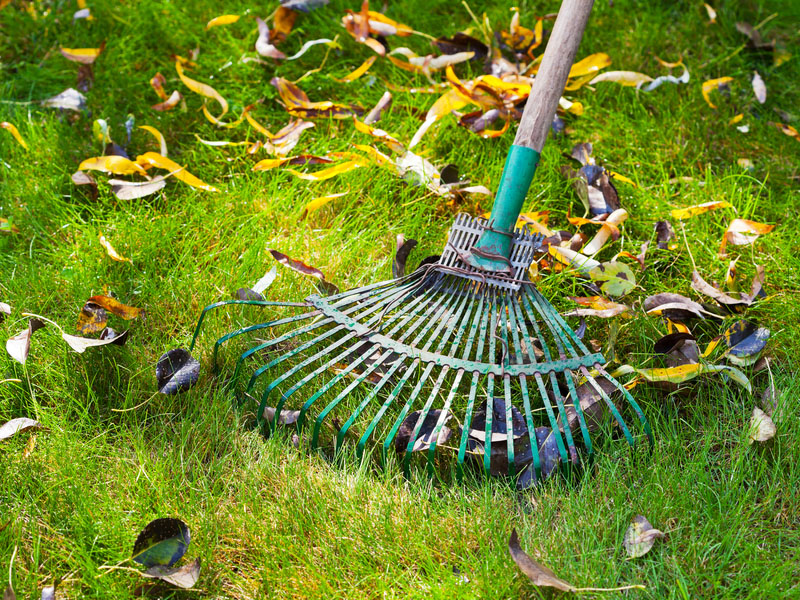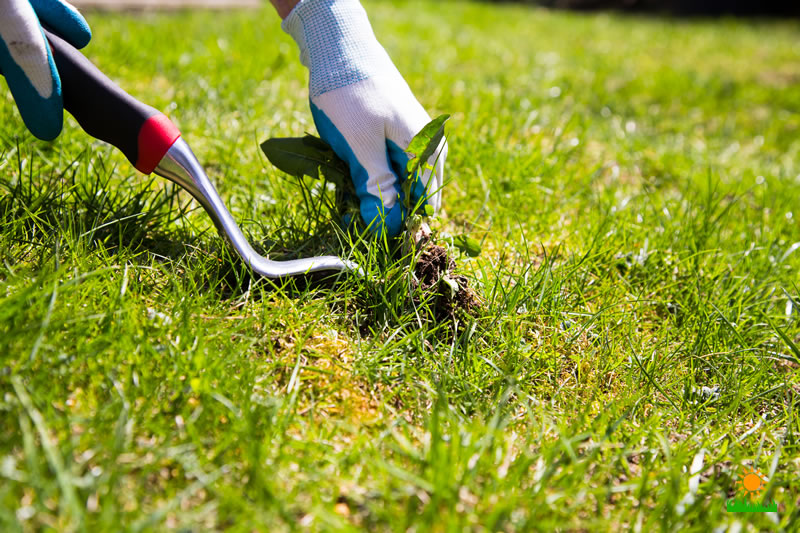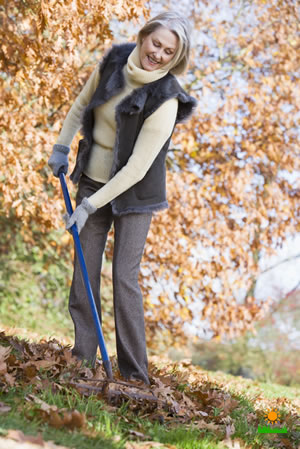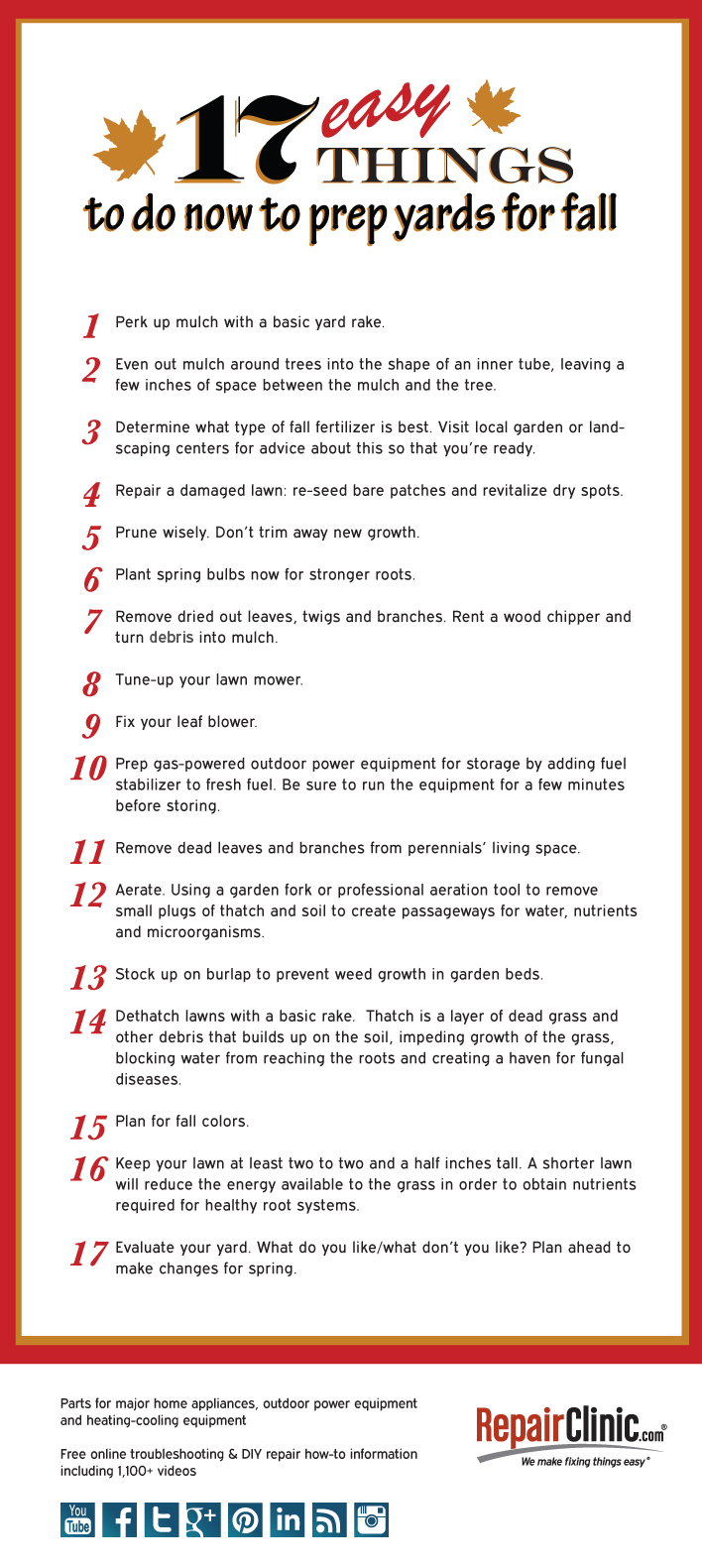As seasons change, homeowners are going to need to adopt different lawn care strategies. When it comes to fall lawn care, the decisions that homeowners make can set the stage for the lawns that they’re going to have during the spring. Many people adore the look and even the feel of autumn leaves, but the stage of autumn that involves beautiful multi-colored leaves is very much a fleeting one. These leaves are going to fall, and people are going to be left with brown, discolored piles of dead plant matter in their yards just before it starts to snow.

Practicing good fall lawn care strategies for the sake of a vibrant spring and summer is like getting a good night’s sleep in order to have an energetic and productive day.
Fertilizing the Lawn in Autumn
Many people never fertilize their lawns at all, and their lawns will suffer the consequences. Autumn is the absolute best time to fertilize the lawn. The growth rate for grass starts to slow down as everything gets cooler in the autumn, but the growth rate of the grass roots themselves will usually stay the same. They’re underground, so they’re going to be less responsive to changes in temperature.
When people fertilize their lawns when the grass is at this stage in its development, the grass roots will be deep and full of the nutrients that will help the grass grow beautifully when the weather starts getting warmer. Fertilizing the lawn should be done during the late or the middle days of autumn, so September is usually going to be too early. Otherwise, homeowners just need to put dry lawn fertilizer on all of the grassy areas of a given lawn.
Herbicide for the Weeds

Weeds are the bane of any lawn’s existence, and the autumn is a good time to start taking care of them. During the autumn, all plants are trying to take in as many nutrients as they can before the winter sets in, and that includes weeds. As such, when herbicides are applied during the fall months, they are that much more likely to stay gone when the spring comes back. To a large extent, homeowners are attacking them at their source when they get rid of the weeds at this point during the year.
The perennial weeds are going to be the easiest ones to destroy using this strategy. Common perennial weeds include clover and dandelions, and these have the advantage of being some of the most common weeds in general. Herbicides in the form of granules should work just as well as the herbicides that need to be applied as a spray, as long as they contain:
- MCPP
- glyphosate
- 4-D
Homeowners should take advantage of the natural growth mechanisms of weeds and take care of them at this stage.
Raking the Leaves Early
 Raking the leaves is the quintessential autumnal lawn care task, but many people don’t do it according to the right schedule. It seems to make some sense to wait until all the leaves have fallen before taking out the rake and removing them. People might feel that all of their efforts will be undone when new leaves fall and disrupt the previously raked areas. It becomes a much easy task when one uses a leaf blower instead.
Raking the leaves is the quintessential autumnal lawn care task, but many people don’t do it according to the right schedule. It seems to make some sense to wait until all the leaves have fallen before taking out the rake and removing them. People might feel that all of their efforts will be undone when new leaves fall and disrupt the previously raked areas. It becomes a much easy task when one uses a leaf blower instead.
However, if people don’t rake the leaves continuously throughout the autumn, they will end up with layers and layers of leaves. These layers will accumulate moisture, which is going to create the perfect breeding ground for fungal diseases and bacterial diseases. The grass is going to be suffocated, and the dead remains will only contribute to the mats of plant matter further. Needless to say, these mats of leaves are also very difficult to clean and remove. As frustrating and thankless as it is, it makes more sense to clean the leaves as they fall.

Shared via Repair Clinic
Reseed Barren Patches

Few factors can affect the look of a lawn more than barren patches. Even an otherwise green and fertile lawn is going to look very shabby under those circumstances. People who want to address this problem will often wait until spring, but this might be too late. They’d be better off trying to fix this issue during the autumn. Lawn maintenance is all about timing, and these crucial lawn problems need to be fixed according to the right schedule.
Homeowners who use this strategy should do the reseeding early in the autumn. Using a combination of mulch, fertilizer, and seeds for this process will yield the best results. This strategy will also work to help prevent the weeds from returning when spring arrives. The developing seedlings will crowd out the weeds, preventing them from becoming established in the ground. Planting seedlings in the autumn may seem counter-intuitive, but it is one of the best lawn care tips out there.
Soil Aeration

Many homeowners neglect soil aeration, but fall is one of the best times to do it. Many people will rent lawn aerators or Scarifiers for this purpose. After homeowners aerate their lawns, it will be that much easier for oxygen and water to reach the roots of the plants when spring arrives. Also Highly recommend BV5600 Leaf Blower to clear out the leaves on your lawn this Autumn.
Plants need water for the sake of photosynthesis and therefore for growth, so if more water manages to reach the roots, the plants will be able to grow more efficiently.
Why Fall Lawn Care Matters (Your Spring Self Will Thank You!)
Let me tell you – fall lawn maintenance isn’t just about keeping up appearances. During the fall season, your grass roots are actually working overtime to prepare for winter. This makes early fall the perfect time to give your existing lawn some extra love.
Your Step-by-Step Guide to a Healthy Lawn
1. Master Your Mowing Game
- Keep your lawn mower blade sharp for clean cuts
- Don’t let grass clippings pile up
- Watch your grass blade height (different for cool season lawns vs warm season grass)
2. Tackle Those Fallen Leaves Dead grass and leaf removal might seem like a pain, but it’s crucial for preventing lawn disease. You’ve got options:
- Use a mulching mower to break down leaves
- Regular leaf cleanup prevents soil compaction
- Consider leaf removal services if you’re short on time
3. Smart Fertilizing Strategy Fall fertilization is like sending your lawn to boot camp:
- Get a soil test first (saves money on unnecessary lawn fertilizer!)
- Choose the right fall fertilizer for your grass type
- Apply lawn care products when grass growth is active
4. Win the Weed Battle Early fall is prime time for weed control:
- Target broadleaf weed problems before they spread
- Stop weed growth before winter sets in
- Use specific treatments for your grass type
5. Aerate Your Lawn If you want serious root growth, don’t skip this step:
- Perfect for fixing soil compaction
- Helps grass seed reach soil (if you’re overseeding)
- Improves watering efficiency
Cool Season vs Warm Season Grass Tips
For Cool Season Grasses:
- Early fall is ideal for seeding
- Keep soil moisture consistent
- Focus on strong root growth
For Warm Season Grasses (like Bermuda):
- Reduce watering as temperatures drop
- Last fertilizer application in early fall
- Prepare for dormancy in late fall
Common Questions About Fall Lawn Care
Q: When should I apply lawn fertilizer? A: Time it 6-8 weeks before the first frost for best results.
Q: How do I know if I need to aerate my lawn? A: If water pools or the soil feels hard, it’s time to tackle that soil compaction.
Q: What’s the best approach to leaf removal? A: Regular cleanup with a mulching mower works great for light coverage. For heavy leaf fall, use a leaf blower or rake.
Q: Should I worry about lawn disease in fall? A: Yes! Proper leaf removal and avoiding excess moisture helps prevent common fall lawn diseases.
The Road to a Beautiful Lawn
Remember, creating a healthy lawn isn’t about doing everything perfectly – it’s about consistency. Focus on these key areas:
- Regular mowing with sharp mower blades
- Smart watering practices
- Proper weed control
- Timely fertilizer application
- Consistent leaf management
Your lawn is going to look amazing come spring, and you didn’t even need fancy lawn care products or complicated techniques. Just follow these straightforward lawn care tips, and you’ll be the envy of the neighborhood!
Conclusion
Many fall lawn care techniques take advantage of the way plants grow and renew themselves. The life cycle of plants in general tends to be very brief, which gives all sorts of windows of opportunity for the homeowners that are trying to control the development of the plants in their yards. There is nothing natural about lawn care.
People are deliberately trying to cultivate an area that matches human aesthetic preferences, and having a lawn that looks like nature reclaimed it means having a messy lawn. However, it is possible to take advantage of the natural developmental mechanisms of plants in order to create the perfect lawn at the perfect time. People who really understand their plants will end up with pristine lawns in the process.
